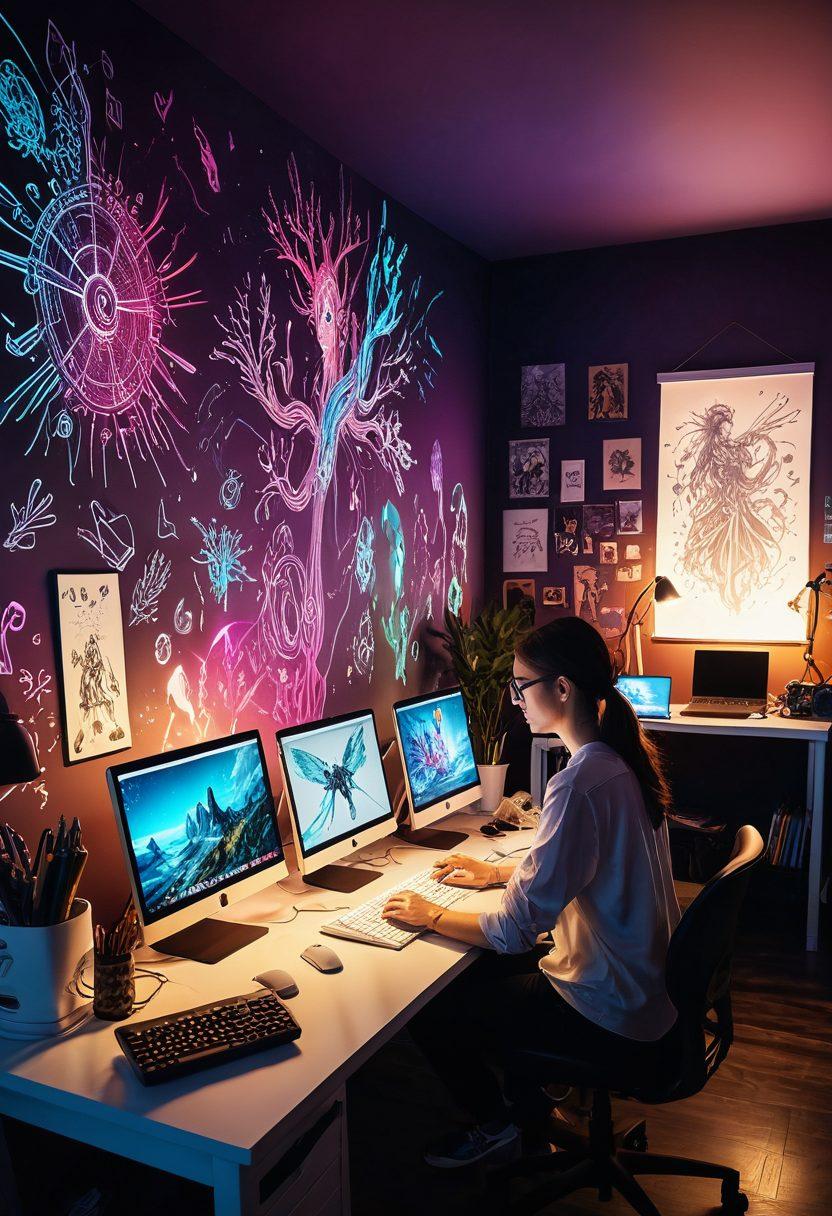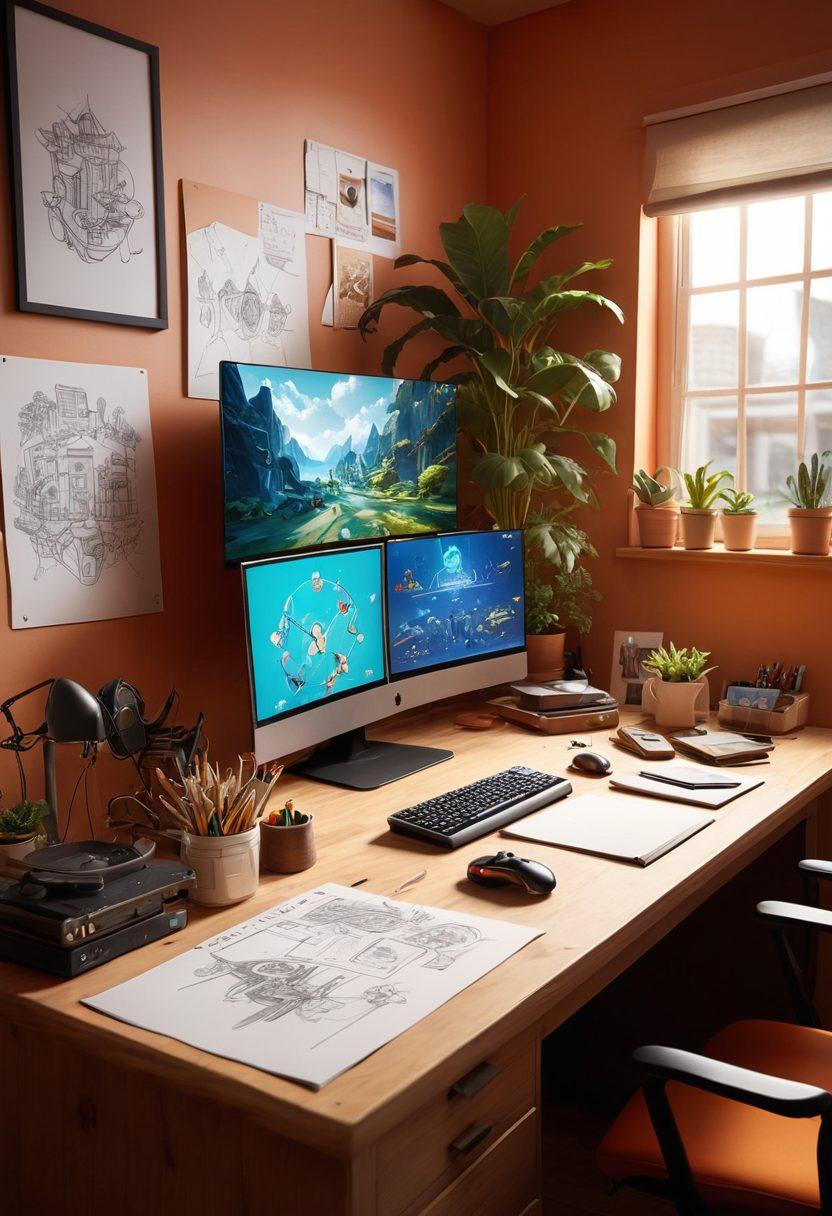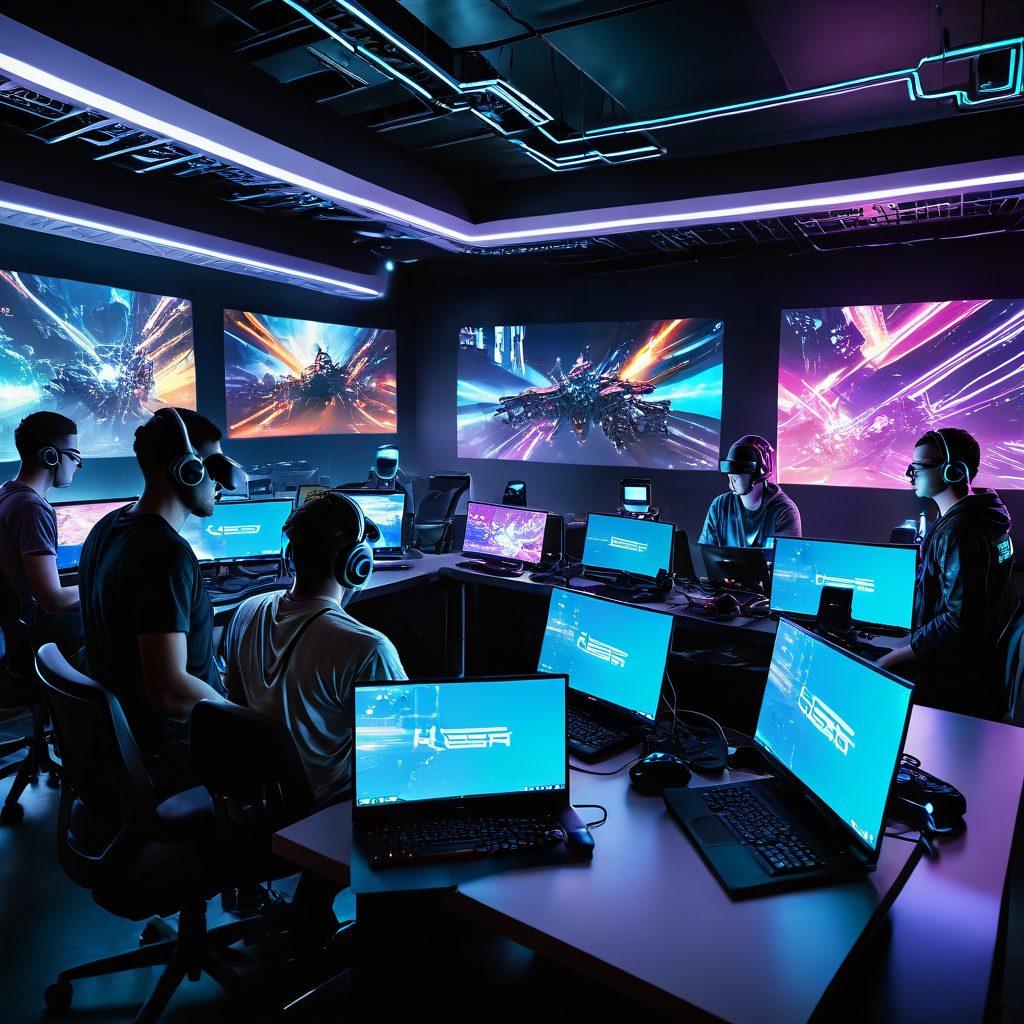Unleashing Creativity: Dive into the World of 3D Game Creation and Interactive Entertainment
In an era where three-dimensional games are at the forefront of interactive entertainment, aspiring developers often wonder how to carve their niche in the vast video game industry. How does one go from playing their favorite mobile games and console gaming masterpieces to creating immersive worlds that captivate thousands? It all begins with understanding the art of 3D game design, where creativity meets technical skill. Let’s embark on a journey through invaluable tips and tricks that can help you master game creation, from the basics of game mechanics to the nuances of game art.
Imagine walking through a breathtaking fantasy game realm, where every shadow creates tension and every character embodies a story waiting to unfold. That’s the magic of 3D game design! However, as any seasoned gamer or developer will tell you, creating such enchanting experiences requires more than just imagination. It requires practical knowledge and the right skills in 3D rendering and game programming. Start by immersing yourself in gaming strategies. What makes a multiplayer game exhilarating? Why do certain indie games stand out? Your gameplay analysis becomes your greatest ally in understanding what resonates with your audience and how to evoke emotions through design.
So, how do you get started? The first step is mastering the tools of the trade. Familiarize yourself with software like Unity or Unreal Engine, as these are the backbone of many three-dimensional games. The beauty of learning these platforms lies in their versatility and robust support community. Check out online gaming blogs that offer game guides and tutorials specific to game assets and mechanics. Why not join forums and virtual communities to gain insights from established developers? Engage in discussions that reflect the latest in 3D gaming news, from breakthroughs in virtual reality games to practical critiques of gameplay.
One of the enchanting aspects of interactive entertainment is the storytelling it enables. As you design your game, think about character arcs and plots that players can connect with. This is where your creative flair can shine—ask yourself, what challenges do my characters face, and how can they engage players on an emotional level? Consider incorporating gameplay elements that support the narrative. Catch phrases like, 'The adventure doesn’t end here,' are not just catchy— they set expectations and ignite curiosity. Crafting compelling narratives paired with innovative game mechanics can help your game become a standout in the competitive landscape of PC games and mobile platforms.
As you take the leap into the world of 3D game design, remind yourself of the power of collaboration. Don't hesitate to share your ideas with peers; gathering feedback and learning from critiques can refine your design approach and enhance your creative process. Remember, even seasoned developers treasure constructive feedback from their experiences. With a solid foundation in 3D rendering techniques and a passion for interactive storytelling, there’s no limit to what you can achieve. So, embark on this creative adventure and let your imagination set the course for the next great fantasy game or indie project that could captivate gamers worldwide.
From Concept to Console: A Journey Through 3D Game Creation and Interactive Worlds
Have you ever lost yourself in the enchanting worlds of three-dimensional games? Imagine soaring through vibrant fantasy realms, racing through the streets of a bustling futuristic city, or teaming up with friends in a multiplayer game that stretches across galaxies. The journey of bringing such mesmerizing experiences to life—from concept to console—captures the essence of game creation and interactive entertainment. As we delve deeper into this captivating world, let’s explore the intricate stages that make 3D game development a thrilling endeavor for both creators and players alike.
The magic of game creation begins with an idea, a spark of creativity that ignites a new universe. Picture this: a team of passionate developers gathered in a brightly lit room, brainstorming ideas for their next project. What will it be? A heroic quest in a sprawling virtual reality game or a strategic saga in a mobile game? These early conversations shape the foundation of their future creation. As they sketch out game mechanics and visualize game art, the excitement builds. Their ideas transform into a vibrant landscape, ripe for exploration. What kind of adventure will players embark on? Each decision made during this phase will echo through every character, level, and interaction in the final product.
With a solid concept in hand, the next step is to breathe life into that vision through careful crafting of game assets and programming. Talented artists conjure enchanting visuals and intricate designs that draw players into the heart of gameplay. Did you know that game art can dramatically influence player engagement? The aesthetics of a game can make or break its connection with the audience, so it’s critical to strike the right balance between function and flair. Once the visuals are set, game programming becomes essential. After all, behind every magical world, there's a robust coding structure to ensure everything runs smoothly. This phase is where the fusion of artistry and technical prowess truly shines.
As the world becomes more interactive, developers must also consider gameplay analysis, balancing challenges and rewards, and ensuring a captivating experience for all players. Think about your favorite moments in gaming—how often were you engaged not just by the graphics, but by the seamless game mechanics? Finding that sweet spot where players feel challenged but not overwhelmed is crucial. The addition of multiplayer features can also enhance interaction, as friends embark on quests together, sharing in victories and heartaches. In this respect, game guides and strategies become invaluable tools for players navigating their digital worlds, helping them emerge victorious against even the most formidable of foes.
Finally, once the game is polished and ready to launch, the anticipation builds. The excitement of the video game industry, especially within communities dedicated to 3D gaming news and video game critiques, sets the stage for a grand unveiling. How will the audience react? Will they resonate with the story you’ve woven into the gameplay? This moment is both exhilarating and nerve-wracking. But remember, this journey is not just about releasing a game. It's about fostering connections that resonate with players worldwide. As we continue to explore the future of game development and interactive entertainment, one question remains: What worlds will you create next?
Level Up Your Skills: Essential Strategies and Insights for the Future of Gaming
The world of interactive entertainment is expanding at an unprecedented rate, with three-dimensional games taking center stage. Have you ever found yourself immersed in a virtual reality game or strategizing your next move in an intricate multiplayer game? If so, you're not alone! As an avid gamer or aspiring game creator, understanding the foundations of game creation can be your secret weapon. Join me on this journey as we explore essential strategies and insights that are pivotal for anyone looking to level up their skills in the fast-evolving video game industry.
When it comes to game creation, the art of storytelling cannot be overlooked. Video game critiques often highlight how immersive narratives blend seamlessly with game mechanics to create unforgettable experiences. Think of your favorite fantasy games: what drew you into that world? Was it the stunning game art, the engaging gameplay analysis, or perhaps the strategic elements that kept you on your toes? By focusing on narrative and design, you can craft a more engaging 3D gaming experience that resonates with players.
Now, let’s delve into gaming strategies—what really makes a game captivating? Successful game design starts with strong game mechanics. How do the mechanics interplay with players' skills? Can they progress steadily, or do they encounter steep challenges? Every game asset, from characters to environments, must serve a purpose in enhancing the gameplay. Create a fun balance between challenge and achievement, and your audience will keep coming back for more—after all, who doesn’t love a good challenge where they emerge victorious?
In today’s vibrant gaming landscape, staying updated with 3D gaming news is vital for any aspiring game developer. Are you keeping tabs on the latest trends in mobile games, console gaming, and even indie games? Following an online gaming blog can help you gain insights into what’s popular and what players want. This knowledge is crucial, not just for game programming, but also for networking with other creatives who can bring your vision to life. Think of each blog post as a mini game guide—unlocking doorways to new knowledge!
Finally, don’t shy away from experimenting with 3D rendering techniques and software. Early interaction with tools will enhance your skills and understanding of game creation. Perhaps you’ll discover a passion for creating game art that greets players upon entering a virtual world or learn the nuances of designing immersive environments for virtual reality games. Remember, every great journey begins with a single step—take that leap into the extraordinary world of interactive entertainment where your creativity knows no bounds!


